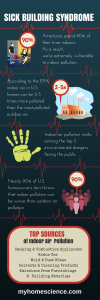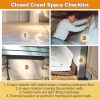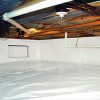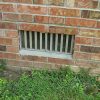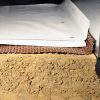Improving your home’s indoor air quality will protect family members from invisible pollutants that can cause serious health problems

Sick building syndrome is not a problem of old, decaying houses exclusively. Harmful pollutants can build up in virtually any home — including newly constructed ones.
Normally I like to begin a blog with a few sentences that explain the importance of the topic I’m planning to cover. But the best way to emphasize the importance of indoor air quality is to simply lay out a few compelling facts & statistics. So here goes:
- Americans spend about 90% of their time indoors. Like it or not, we are profoundly and unavoidably vulnerable to indoor air pollution, which is sometimes known by another name: Sick Building Syndrome.
- The Environmental Protection Agency has ranked indoor air pollution among the top 5 environmental dangers facing the public. According to the EPA, indoor air (in U.S. homes) can be 2-5 times more polluted than the unhealthiest outdoor air found in this country. Despite this EPA warning, nearly 90% of American homeowners don’t know that pollution can be worse indoors than outdoors.
- Adverse health effects from indoor air pollution range from mild allergic reactions (runny nose, eye irritation) to severe respiratory ailments, immune system disorders and cancer.
- The EPA enforces legislation aimed at curbing outdoor air pollution, covering pollutants like soot, ozone, carbon monoxide and more. But limiting indoor air pollution is primarily left up to the homeowner.
- Indoor air pollutants vary greatly in origin, composition and health effects. Pollen, dust mite feces and mold spores are organic pollutants that get into your house when certain favorable conditions are present. Formaldehyde, benzene and acetone are chemical toxins present in certain products that can be purchased for use in the home. Radon is a radioactive gas that emanates from soil and rock. When radon concentrations increase indoors, so does the risk of cancer.
Making your home healthier begins with awareness, then action
OK, if you’re with me so far you know how serious sick building syndrome can be. Let’s talk about what we can do about it. One of the first priorities can be to test your home for radon. You can buy a DIY test, or have a local radon contractor perform the test. There’s no need to fear a high radon reading (above 4 picocuries per liter of air) because a mitigation system will effectively minimize your exposure to harmful radon gas.
With some basic awareness of indoor air quality issues, you can do a great deal to avoid sick building syndrome. For example, don’t allow the filter (or filters) in your forced-air system to become clogged and dirty. Since your ductwork system distributes air throughout the living space, it’s wise to make sure that leaky ductwork isn’t sucking air from basement, crawl space and attic areas into your indoor air supply. Sealing leaky ducts will improve energy efficiency as well as indoor air quality.
Excess moisture (primarily in basement, crawl space & bathroom areas) can adversely affect indoor air quality by attracting mold and dust mites. To combat these critters (who put microscopic pollutants into the air), you may need a multi-faceted strategy that combines foundation waterproofing, air sealing, dehumidification and effective bathroom ventilation.
Many of the chemical compounds that can cause sick building syndrome can be avoided simply by smart shopping. Always use “green” cleaning products instead of those that contain solvents like benzene or toluene. When buying furniture, carpeting, curtains and other furnishings, make sure to confirm that products don’t contain formaldehyde.
One final bit of advice: Don’t fall for the faulty folk legend that “houses need to breathe” to avoid indoor air quality issues. To be sure, good ventilation is important, because stale indoor air needs to be replaced with a balanced supply of fresh outdoor air. But it’s much better to manage this air exchange with modern, electronically controlled HVAC equipment than by random leakage through gaps and cracks that cause comfort and energy problems.
Click here for more information on how to avoid sick building syndrome.


